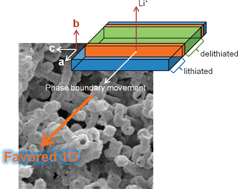One-dimensional (1D) nanostructured and nanocomposited LiFePO4: its perspective advantages for cathode materials of lithium ion batteries
Abstract
Nanostructured materials have attracted recent research interest as battery materials due to their expected enhancement of properties. The characteristic nanoscale dimension and its structuring guarantees improved charge and mass transfer during charge/discharge processes. Among the potential cathode materials investigated as a substitute to LiCoO2, one of the most promising materials is LiFePO4 with olivine structure (


 Please wait while we load your content...
Please wait while we load your content...